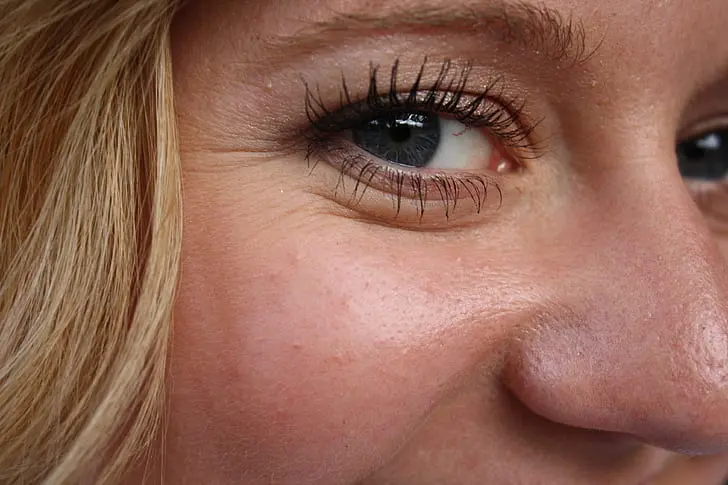Understanding Wrinkles
What They Are and How to Improve Them

Wrinkles are one of the most visible signs of aging, yet they're often misunderstood. These lines and creases that develop on our skin tell a complex story of time, genetics, lifestyle, and environmental exposure. While wrinkles are a natural part of the aging process, understanding their formation and the science behind their development can help you make informed decisions about prevention and treatment. With modern skincare technology and AI-powered analysis, we can now better understand our individual wrinkle patterns and create targeted approaches to minimize their appearance.
What Are Wrinkles? The Science Behind Skin Aging
Wrinkles are creases, folds, or ridges in the skin that develop as we age. They occur when the skin loses its elasticity, thickness, and moisture over time. To understand wrinkles, we need to look at the structure of our skin and how it changes as we get older.
Our skin consists of three main layers: the epidermis (outer layer), dermis (middle layer), and hypodermis (deepest layer). The dermis contains collagen and elastin fibers that give skin its strength, elasticity, and smooth appearance. As we age, our bodies produce less collagen and elastin, causing the skin to become thinner, less elastic, and more fragile.
Key Fact: After age 25, we lose approximately 1% of our collagen production each year. This gradual decline is what leads to the formation of fine lines and eventually deeper wrinkles.
Types of Wrinkles: Understanding the Differences
Not all wrinkles are created equal. Understanding the different types can help you choose the most effective treatment approaches:
Dynamic Wrinkles
Also called expression lines, these appear when facial muscles contract during expressions like smiling, frowning, or squinting. Examples include crow's feet, forehead lines, and laugh lines.
Static Wrinkles
These are visible even when your face is at rest. They result from loss of collagen, elastin, and facial volume due to aging and sun damage.
Fine Lines
Shallow wrinkles that appear early in the aging process, often around the eyes and mouth. These are typically the first signs of aging to appear.
Deep Wrinkles
More pronounced lines that develop over time, including nasolabial folds and marionette lines. These require more intensive treatment approaches.
What Causes Wrinkles? The Major Contributing Factors
While aging is the primary cause of wrinkles, several factors accelerate their formation and determine their severity:
Sun Exposure: The #1 Culprit
Ultraviolet (UV) radiation from the sun is responsible for up to 90% of visible skin aging, a process called photoaging. UV rays break down collagen and elastin fibers in the dermis, leading to premature wrinkle formation. This is why areas regularly exposed to sun, like the face, neck, and hands, typically show signs of aging first.
Facial Expressions: Repeated muscle contractions from expressions create grooves beneath the skin's surface. Over time, as skin loses flexibility, these grooves become permanent wrinkles.
Genetics: Your genetic makeup determines your skin type, collagen production rate, and how your skin ages. Some people are naturally predisposed to developing wrinkles earlier or more severely than others.
Smoking: Tobacco use accelerates aging by reducing blood flow to the skin and depleting it of oxygen and nutrients. The repetitive pursing of lips when smoking also contributes to wrinkles around the mouth.
Environmental Factors: Pollution, wind, and dry air can damage skin and accelerate wrinkle formation. Air pollution creates free radicals that break down collagen and elastin.
Sleeping Position Impact: Consistently sleeping on your side or stomach can cause sleep lines that eventually become permanent wrinkles. This is why dermatologists often recommend sleeping on your back when possible.
How to Improve Wrinkles: Evidence-Based Approaches
The good news is that there are numerous effective ways to prevent and improve the appearance of wrinkles. The key is understanding which approaches work best for different types of wrinkles and stages of aging.
Topical Treatments: The Foundation of Anti-Aging
Retinoids
The gold standard for wrinkle treatment. Retinoids increase cell turnover and stimulate collagen production. Start with over-the-counter retinol or see a dermatologist for prescription tretinoin.
Vitamin C
A powerful antioxidant that protects against free radical damage and stimulates collagen synthesis. Use a stable form like L-ascorbic acid or magnesium ascorbyl phosphate.
Peptides
Short chains of amino acids that can signal skin to produce more collagen. Look for products containing copper peptides or palmitoyl peptides.
Hyaluronic Acid
While it doesn't prevent wrinkles, it plumps the skin with moisture, making fine lines less visible. Essential for maintaining skin hydration.
Alpha Hydroxy Acids
AHAs like glycolic and lactic acid exfoliate the skin surface, improving texture and reducing the appearance of fine lines.
Niacinamide
Vitamin B3 improves skin elasticity, reduces inflammation, and can help with collagen production when used consistently.
Professional Treatments: Advanced Solutions
For more significant results, professional treatments can address wrinkles more effectively than topical products alone:
Botulinum Toxin (Botox): Highly effective for dynamic wrinkles, Botox temporarily relaxes facial muscles to prevent expression lines from forming. Results last 3-6 months.
Dermal Fillers: Hyaluronic acid fillers can plump up deeper wrinkles and restore lost facial volume. Different types of fillers are used for different areas and wrinkle types.
Chemical Peels: Professional peels remove damaged skin layers, stimulating new collagen production and improving skin texture. Deeper peels provide more dramatic results but require more downtime.
Microneedling: Creates controlled micro-injuries to stimulate collagen production. Often combined with serums or radiofrequency for enhanced results.
Laser Treatments: Various laser technologies can resurface skin, stimulate collagen production, and improve wrinkle appearance. Options range from gentle IPL to more intensive CO2 lasers.
Prevention: The Best Anti-Aging Strategy
While treating existing wrinkles is important, prevention remains the most effective anti-aging strategy. Starting good habits early can significantly slow the aging process:
Sun Protection
Use broad-spectrum SPF 30+ daily, wear protective clothing, and seek shade during peak sun hours. This single step can prevent 90% of premature aging.
Consistent Skincare
Establish a routine with gentle cleansing, moisturizing, and active ingredients like retinoids and antioxidants. Consistency is key for long-term results.
Healthy Lifestyle
Don't smoke, limit alcohol, stay hydrated, eat antioxidant-rich foods, and get adequate sleep. These factors significantly impact skin aging.
Facial Exercises
While controversial, some evidence suggests facial exercises may help maintain muscle tone and skin firmness when done correctly.
Creating Your Personal Anti-Aging Plan
The most effective approach to wrinkle improvement is personalized and multi-faceted. AI-powered skin analysis can help identify your specific wrinkle patterns, skin type, and aging concerns to create a targeted treatment plan.
Start with the basics: consistent sun protection and a good skincare routine with proven ingredients. For those in their 20s and 30s, focus on prevention with antioxidants, retinoids, and sun protection. Those in their 40s and beyond may benefit from combining topical treatments with professional procedures.
Understanding your unique wrinkle patterns and skin needs allows you to make informed decisions about treatments and prevention strategies. With the right combination of prevention, topical treatments.
✨ Join FaceSkinAI
Get personalized AI skin analysis and tailored product recommendation.
Sign Up



